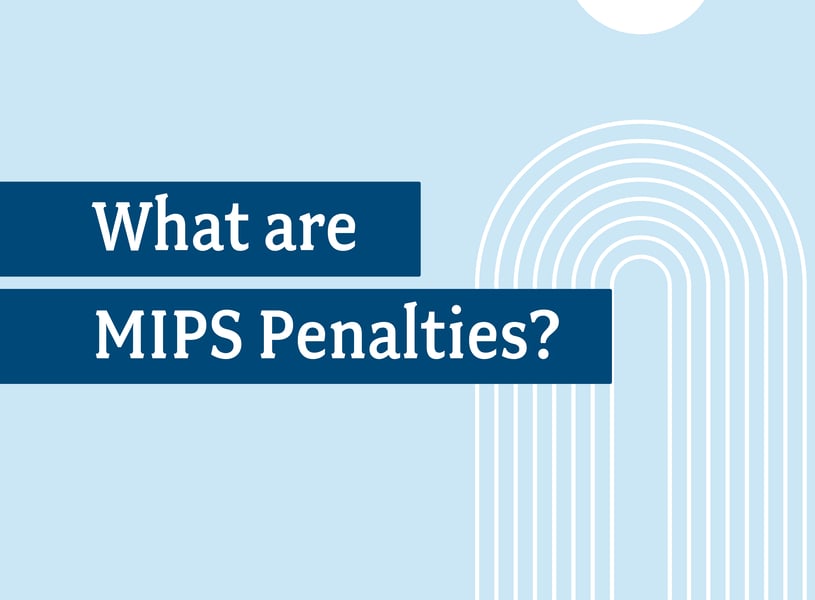What are MIPS Penalties?

MIPS penalties are negative payment adjustments that CMS imposes on an eligible clinician’s Medicare Part B fee-for-service claims for failing to meet the MIPS program’s performance threshold in a given year. MIPS penalties are sliding-scale penalties based on nationwide performance and can change annually. In 2024, for example, the maximum penalty was set at a -9% adjustment on your Medicare pay-outs.
How MIPS Scores are Calculated
MIPS program requirements are divided into four categories: quality, promoting interoperability, improvement activities, and cost. Each category has its own set of measures by which your performance is evaluated and scored. Learn more about the MIPS categories and measures.
Your scores in each of these categories are added together to arrive at your final MIPS Composite Performance Score (CPS). However, the categories are weighted, meaning some categories will have a greater impact on your MIPS CPS than others.
CMS has a history of adjusting the category weights from year to year. In 2024, the category weights were as follows:
- Quality – 30%
- Promoting Interoperability – 25%
- Improvement Activities – 15%
- Cost – 30%
Your final CPS in your MIPS performance year will determine your payment adjustment for the corresponding fiscal year. There is typically a two-year gap between a performance year and the fiscal year it impacts. The 2022 performance year, for example, impacted payments for the 2024 fiscal year.
The MIPS Performance Threshold
Each year, CMS sets a minimum MIPS CPS, or “performance threshold” that eligible clinicians must achieve in order to avoid MIPS penalties and possibly earn additional funds. MIPS penalties and rewards are distributed on a sliding scale; how far above or below the performance threshold your score is will determine how much you financially gain or lose.
Let’s look at the 2024 performance year as an example of how this works. In 2024, CMS set the MIPS performance threshold at 75 points. Based on CMS’s sliding scale for that year, penalties and rewards ranged as follows:
- 0-18.75 Points: -9% penalty on your Medicare fee schedule
- 18.76-74.99 Points: Anywhere from -8.99% to 0% penalty on your Medicare fee schedule depending on your score
- 75 -100 Points: CMS takes the funds of those who did not meet the threshold and distributes them among those who did. If your MIPS score falls in this range, you would receive some portion of those funds, up to a 9% increase to your Medicare fee schedule.
For a detailed review of how MIPS scores are calculated, please see CMS’s latest Traditional MIPS Scoring Guide.
Is MIPS the right reporting framework for you?
Keep in mind that CMS offers alternative reporting frameworks under the Quality Payment Program that may be better suited for your practice. This includes the more specialty-focused MIPS Value Pathways (MVP) framework (which will likely replace traditional MIPS in the next few years), and the APM Performance Pathway (APP) for ACOs. To learn more about the latest requirements for each framework, read our guide to the 2024 Quality Payment Program Reporting Requirements.
Need help improving your MIPS performance?
Medisolv can help. Start by exploring our platform’s proven MIPS Reporting Package, which gives you everything you need—including unlimited guidance from your Medisolv clinical quality advisor—to take control of your MIPS score.
Medisolv Can HelpAlong with award-winning software, each client receives a dedicated Clinical Quality Advisor that helps you with your technical and clinical needs. We consistently hear from our clients that the biggest differentiator between Medisolv and other vendors is the level of one-on-one support. Especially if you use an EHR vendor right now, you’ll notice a huge difference.
|





Comments